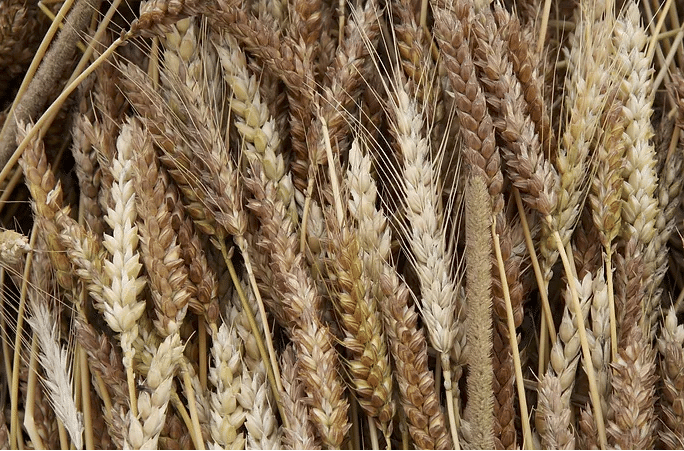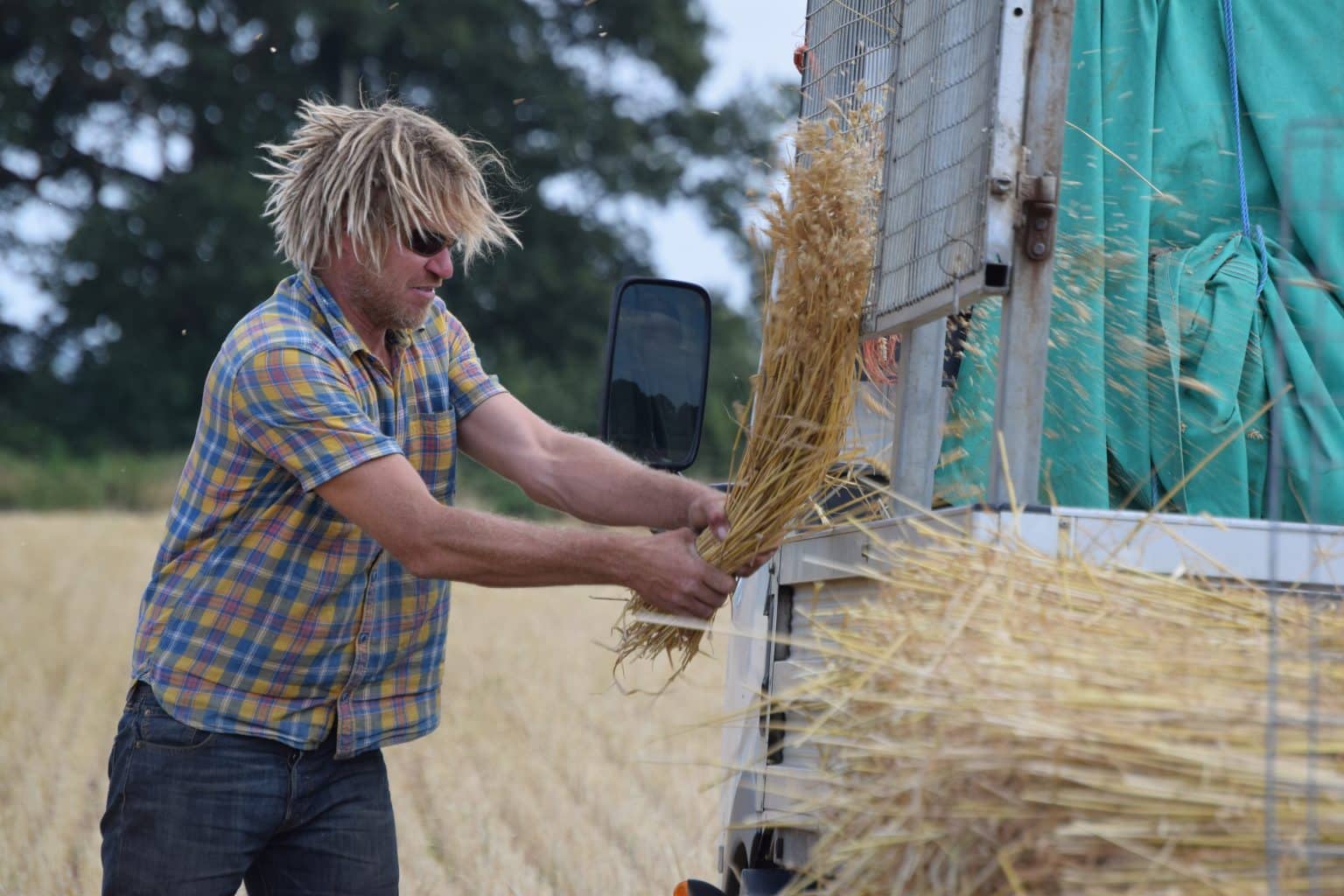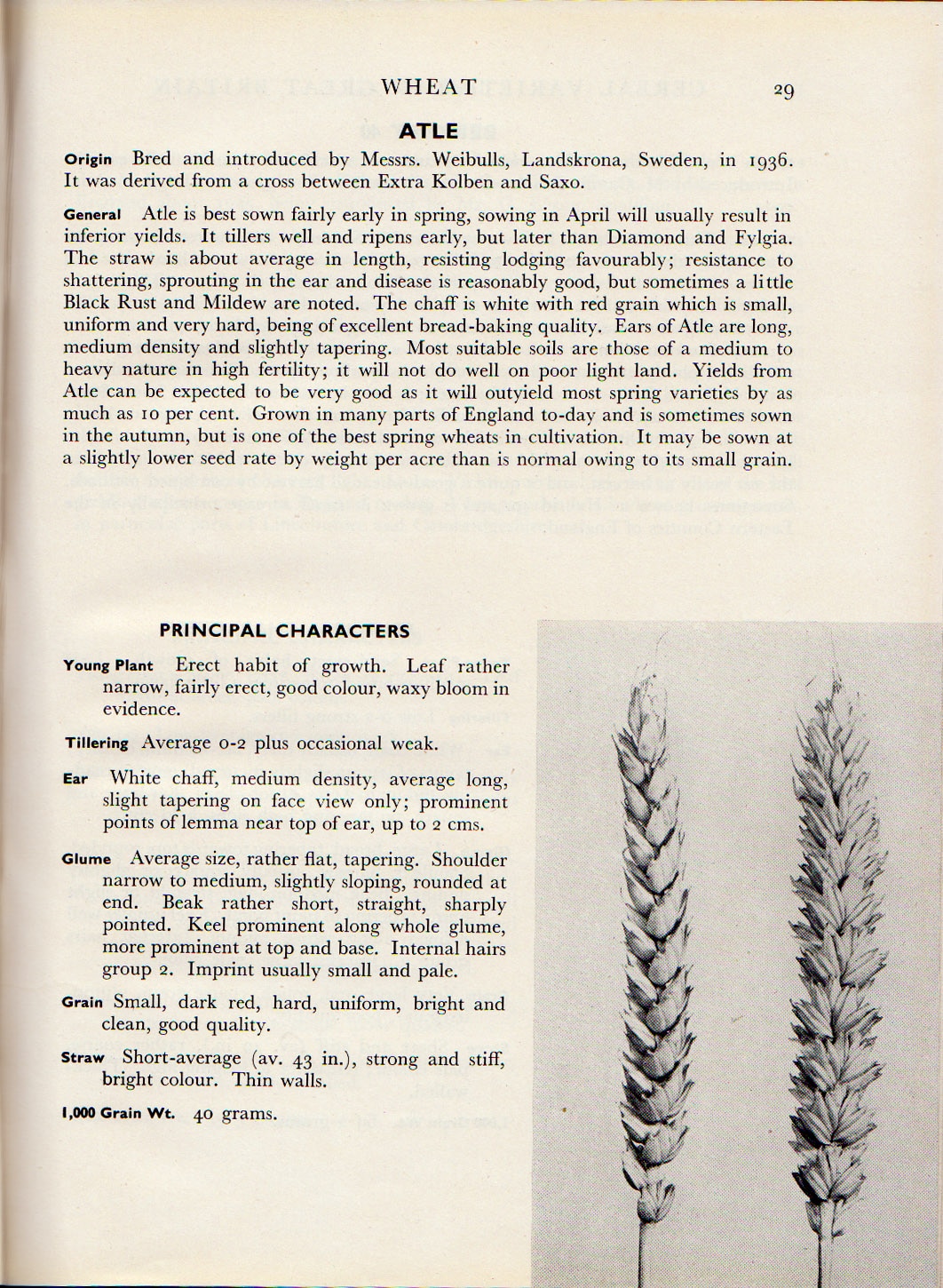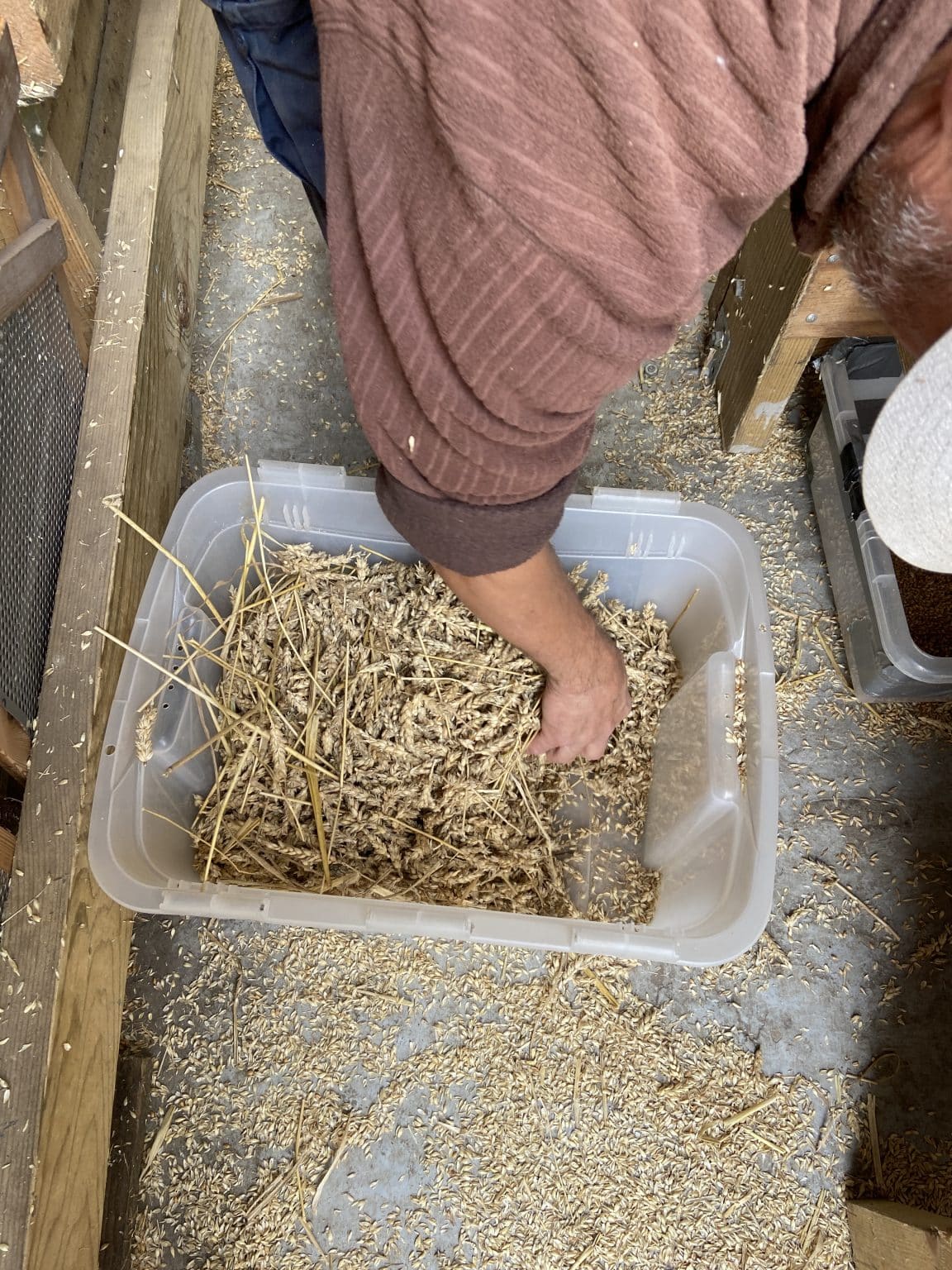|


Cultivating our own thatching straw for the Hand Earth Gesture Return public art programme, from Atle Spring wheat, created the unusual scenario of grain as a by-product. We teamed up with John Letts and the Heritage Grain Trust to learn how to traditionally process this grain, turn it into flour and then into bread. We also learnt about heritage grains and why a move to increase farming of diverse populations of heritage grains could hold the key to UK grain self-sufficiency.


Traditional field threshing by the Hand Earth Gesture Return artists and volunteers.


Sorting the wheat from the chaff using a traditional winnower.
“Landrace crops were much more resilient, reliable and adaptable than modern varieties, and had large root systems that allowed them to draw moisture and nutrients from deep below the soil surface. Wheat rarely cross-pollinates, and traditional landraces were complex mixtures of pure-breeding lines that were well-adapted to local growing conditions. Seed was resown from the previous year’s harvest which ensured crops were always in the process of adapting to local growing conditions and longer term climate change.
In the mid-19th century, plant breeders began to select and purify individual lines within these mixtures that yielded better in soils with higher levels of nitrogen derived from natural (eg. manure) or ‘artificial’ (eg. guano) sources. Only the most promising lines were retained and multiplied, and most of the diversity that once grew in farmers’ fields was lost.
Many of the heritage varieties that are becoming popular with artisan bakers are genetically narrow because they have been bulked up from samples that were ‘purified’ by plant breeders, or which lost their diversity accidentally while being maintained in gene banks over the past century. Thankfully, heritage lines from the UK and abroad can be mixed to create new ‘populations’ that, if sufficiently diverse, will gradually become dominated by the best adapted lines and thereby mimic the resilient landraces and variety mixtures that were grown by our ancestors.
Today, almost all of the grain used for baking, brewing and distilling is grown from a handful of modern hybrid varieties that perform poorly in organic and low input (ie. low fertility) systems. They have shallow roots which make them susceptible to drought, and because they are genetically uniform they lack resilience and cannot adapt to longer term climate change. They perform well only when grown intensively using massive quantities of artificial fertiliser, herbicides, fungicides and pesticides – which are poisoning our food, destroying biodiversity and warming the planet. Modern wheat fields are ecologically sterile grain factories designed to convert cheap oil into cheap grain, much of which is fed to animals.
There is a growing demand for ‘real’ bread that is more flavourful than mass-produced supermarket bread baked from ‘commodity’ grains. Consumers are also demanding bread that is more nutrient dense and less problematic for people with gluten intolerance or coeliac disease. The Heritage Grain Trust will support the efforts of growers who have created genuine heritage populations that grow well in low input conditions, and which produce grain well suited to artisan-style baking, brewing and distilling.
In diversity there is strength!”
John Letts; Heritage Grain Trust.